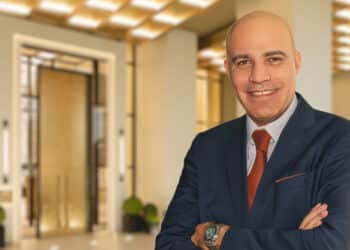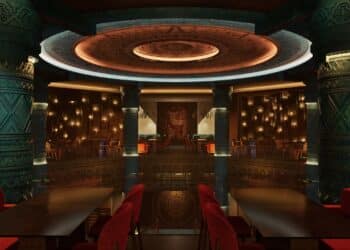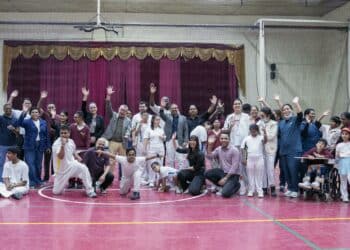From social messaging to 3D storytelling, Hotel News ME looks at creative techniques being used to engage hotel guests around the world.
Today’s guests demand more from their hotel brands than ever before. They expect a personalised service and their needs to be anticipated and this is definitely not limited to their in-house experience. Guests want engagement at all times, regardless of whether they intend to book a room or not. They want to be treated like individuals, yet enjoy being part of a like-minded online community, and like all relationships, hotel guests expect emotional connection with a property and/or brand. 
It’s become a tall order to keep today’s customer interested, let alone loyal, but hotels that get their marketing strategies right, establishing meaningful relationships with their guests, are onto a winner.
Fortunately, as technology rapidly evolves, there are a plethora of tools, methods and media that lend themselves to creative marketing. Here, we ask the experts for their top tips on effective strategies and also look at how some of the world’s top hotel brands are thinking outside of the box to drive business through customer engagement.
Respect guest privacy, create experiences
The days of mass mailing and hammering guests with offers are well and truly over, according to David Henry, vice president of sales, marketing and distribution for AccorHotels Group in the Middle East.
“It’s the best way to lose customers,” he says. “We must respect customer privacy and give them the option to manage their level of marketing pressure.”

In the age of mass data, hotel groups know their customer, their travel habits and preferred destination, but instead of abusing this information, AccorHotels Group allows its guests to manage their profiles and the level of marketing they receive.
“We also don’t ask them questions if we are not going to use the answer; hotel groups should have the respect to follow up on guest profile information,” he says.
Business is in the hands of a “very small portion of repeaters” to whom hotels must adjust, he continues.
“We must therefore give them an experience that they will share,” says Henry, “because if they don’t get the experience they will look somewhere else for it and then we lose their loyalty”.
Instead of driving offers and promotions, AccorHotels prefers storytelling via social media to “drive brand values and customer engagement”.

Recent examples included its Mercure brand’s ‘Six Friends theory’ campaign, says Henry.
“To test the ‘six degrees of separation theory’ that only five friends separate you from anyone else in the world, we ran a competition,” he explains.
“We asked guests to create a 60-second video about what made them a best friend and the winner won a world tour with Mercure to meet five people that ultimately connected them to an Aboriginal man in Australia.”
The impact of the campaign was “tremendous” and generated strong engagement and new audiences, according to Henry.
“It’s a very different marketing proposition from ‘give me your email address and get a free drink during your next stay’,” he comments.
The ‘shareability’ factor
Today, hotel brands must differentiate themselves, using social media to “create awareness, establish credibility and build rapport”, according to Bruce Martin, managing director of award-winning social media agency, Ginger Juice, which specialises in travel, tourism and hospitality.
“Have the confidence to have fun with your brand,” he advises. “Don’t just post pictures of chandeliers. Be more human and create desire.”
Hoteliers should also be honest in the way they approach marketing, he continues. “Don’t be so pious or take yourself too seriously.”
He refers to Emaar’s “very bold campaign”, generated by a YouTube video of an Emirati man, sitting on a plastic garden chair on a Dubai beach, who is lifted up in the air by several balloons tied to that chair.
He was chased by a beach security guard who was trying to stop him from going ahead with the stunt and it came with the warning ‘don’t try this at home’. This daring video was used to promote the view from one of Emaar’s new properties.
“It worked because it was shareable,” says Martin. “In fact it was remarkable – in that people remarked on it.”
The terms ‘shareable’ and ‘shareability’ are now engrained in the hotel marketer’s vernacular as social media becomes the tool of choice for delivering brand messages designed to be shared and if they are lucky, ‘go viral’.
The key, says Martin, is to created “scroll stoppers”.
“When people are scrolling through Facebook or Twitter, what’s going to make them stop on your brand message or picture?” he asks.
The power of video
Martin advocates video as one of the strongest experiential marketing tools hotels should be leveraging.
“Video is so important now, particularly in the GCC where mobile social media has exploded,” he says.
“We get more engaged from video, but it needs to be short and snappy and videos without sound, just subtitles, are particularly powerful.”

YouTube, visited by one billion people each month, is proving a highly effective online channel for travel content distribution, according to Google’s Travel Content Takes off on YouTube report.
Around 80% of YouTube travel searches focus on destinations or attractions and views of branded videos are rocketing – up 394% in 2014.
Oliver Yeates, founder of UK-headquartered digital marketing agency Clicky Media, adds that 50% of travellers engage with videos online and 67% use video to help them find a destination.
Some of the most recent hotel brand video success stories include JW Marriott’s Two Bellmen Two film, which follows the story of two bellmen racing through Dubai to find a confidential presentation for a hotel guest. The film was shot in Dubai and features the JW Marriot Marquis Hotel Dubai throughout.
“Marriott has been well ahead of the curve in the content game,” says Annie Meikle, founder of Social Shop Dubai. “The company even launched an in-house content studio last year.”
Marriott’s Content Studio is a global creative and content marketing studio that handles the hotel group’s portfolio of 18 travel-related brands, which Marriott’s vice president of creative, content marketing and global marketing, David Beebe, says he views as “the opportunity to be the world’s largest producer of travel-related content.
The former Disney-ABC Television executive and producer says content is a long-term strategy that pays dividends over time.
He notes that the first of the Two Bellmen film series, shot in Los Angeles, had 5.1 million views in 11 months, while the aforementioned sequel, shot in Dubai, hit 7.9 million views in just three weeks.
The first film was an unknown, but established an engaged audience, says Beebe, while the second built on that engagement.
Content marketing is “a lot like dating”, Beebe tells Skift. “You don’t get a second date unless you provide value during the first.”
Marriott’s Content Studio has also launched a digital travel magazine, Marriott Traveler, featuring destination content.
It initially focused on bringing US cities to life, but this year the UAE was added to the line-up, in part to start growing the audience established with the second Bellmen film.
To date, most of the UAE content on Marriott Traveler relates to the JW Marriott Marquis Dubai, but the themes relate to food, shopping, and local celebrities like Ali Al Sayed, who appeared in the film.
The digital marketing platform has also picked up local sponsors such as Emirates, Mercedes-Benz and Tumi.
In the future the content will be expanded, with a particular focus on talent and celebrity profiles relevant to the UAE, Beebe reveals.
Another growing trend is for travel and hospitality brands to stream live video via social media to generate integrated brand and destination experiences.
To celebrate its one-year anniversary, Hotel Jen, the mid-market lifestyle hotel brand by Shangri-La Hotels and Resorts, staged nine themed parties in nine cities simultaneously and pushed out live Periscope footage of the festivities on social media.
The ‘We are One Party’ generated 150,000 live viewers and replays, 52,000 likes, and an engagem

ent rate of 4,400.
As part of the same anniversary campaign, Hotel Jen also created the shortest ever video city guides – ‘24 hours in 24 seconds. Not One Moment Wasted’, giving viewers immersive insights into the destinations were Hotel Jen properties are located.
A new virtual world
Virtual Reality (VR) and 3D technology are emerging as popular experiential marketing tools too.
Taking the lead is luxury UAE-based hospitality firm, Jumeirah Group, which in 2015 launched ‘Jumeirah Inside’, the world’s first integrated exploration and booking engine featuring 360-degree video.
Tapping into the ‘try before you buy’ trend, the hotel company partnered with Google 360, using its famous street-view technology to create a virtual hotel tour, giving viewers a peek inside its luxury properties, including Dubai’s famous seven-star Burj Al Arab.
“We have created a digital experience that closely mirrors the physical experience of our properties,” explains Ross McAuley, Jumeirah Group’s vice president of brands, digital and loyalty.
“It’s pushed Jumeirah to the forefront of the luxury industry in terms of the scope and scale of a digital brand experience.”
The 3D Jumeirah Inside concept has generated more than 10 million views on Jumeirah’s YouTube channel and has had an ad recall of 95%.
Jumeirah Inside, is “perhaps a first glimpse of the luxury hotel website of the future” says McAuley.
The hotel firm is also exploring ways to use new technology like 3D and VR in its offline marketing, he reveals.
For example, inexpensive Google Cardboard VR headsets could help Jumeirah’s sales teams bring the brand experience to life for trade partners.
Shangri-La Hotels and Resorts has already dabbled with this technology – in October it became the international hospitality brand to roll out Samsung Gear VR headsets for each of its 17 global sales offices and 94 individual hotel sales teams for the same purpose. The company is also testing virtual reality videos.
Meikle says virtual reality is a “natural fit” for the hospitality sector, enabling hotel groups to “transplant users into an unforgettable emotional experience” through the use of VR goggles.
The rise of Snapchat
Hotel firms are also starting to pay attention to the power of Snapchat, the image messaging and multi-media mobile app with an audience that’s growing at an exponential pace.
At last count (April 2016), Snapchat users were watching 10 billion videos a day on the app, up from eight billion in February, which is encouraging companies to tell their brand ‘stories’ by broadcasting photos and videos.
The idea is that conversations are not only including a photo or video, but are being started by them.
“If you are a hotel brand, Snapchat is useful to build awareness and to create an online persona,” says Martin. “But brands must go in with their eyes open.”
He believes Snapchat works for “funky brands” or those trying to court Gen Y and Z – the ‘Snap’-savvy community of young travellers.
Shangri-La and Marriott were two of the first hotel brands to use Snapchat to connect with this new generation of guests.
Shangri-La worked with Beautiful Destinations to post captivating shots of some of its Asian hotel properties, which garnered some 1.4 million views, while Marriott’s Content Studio partnered with four influencers to push out content on Snapchat.
The three-month campaign was designed to create a two-way conversation with users about what cities the influencers should visit.
The influencers worked alongside Marriott during the visits and together they picked the most popular cities.
Beebe says the influencers produced compelling stories about destinations where Marriott was the hero.
How to use influencers
Unlike Marriott, many hotel groups are still working out “what to do with influencers”, according to Martin.
“A large audience is not necessarily a good audience,” he warns. “You need to make sure you use the right one. It’s about recommendations. If people are following people, it’s much better than a blog or an advert. The question is, how can hotels do something different with influencers?”
Social media specialist Shane Dallas, aka ‘The Travel Camel’, believes Middle East travel and hospitality firms need to “better utilise social media influencers”.
“The idea of giving influencers free hotel stays or meals in return for publicity is not as effective as forming an online marketing campaign with the right influencer,” he stresses.
Shangri-La Hotels and Resorts is collaborating with influencers in China where
Millennials don’t trust brands and traditional marketing techniques, says the hotel group’s vice president of brand communications, Luca Deplano.
“More than in any other market where we operate, there is a genuine desire on their part to build bonds with like-minded individuals from the same generation. That is why we have initiated a programme to identify and work with genuinely passionate KOLs (key opinion leaders or influencers) who embody the type of hospitality values Shangri-La represents,” he explains.
“The group is currently running a very successful brand campaign in China where we have invited eight KOLs to visit eight of Shangri-La’s iconic hotels. We ask them to create content in their own style – giving them total creative freedom.
“We want the KOLs to create content that resonates with their audience, not content that is filtered through our own point of view. If we want to be successful as a brand in reaching out and communicating to our audience, we need to trust the instincts and ability of the KOLs to connect with their followers. Giving so much freedom to content creators is a learning process for us, but so far it has been very rewarding and successful for us and the KOLs we’re partnering with.”
Marketing through messaging
Shangri-La has also been active in the social messaging arena and was the first hotel company to use WeChat to roll out its content marketing campaigns.
Shangri-La’s chief marketing officer Steven Taylor says WeChat dominates content marketing in China, which led to the hotel group fast-tracking the production of content tailored to this market.
Hyatt has also used WeChat to connect with current and potential Chinese customers.
WeChat, along with Snapchat, Whatsapp, Facebook Messenger, Viber and many other messaging platforms now dominate how the modern world communicates.
It’s the fastest-growing online behaviour within social media and will account for 2.5 billion users globally by 2018, compared to two billion general social media users, according to Skift’s Megatrends Defining Travel in 2016 report.
Marketing experts say travellers will increasingly turn to messaging to shop and to communicate with brands and Skift says it will become a “conduit to customer service”.
Social messaging has become a “hot topic” with the launch of Facebook Chat Bots, according to Deplano.
“The big question many brands in hospitality ask themselves is whether Facebook Messenger Chat Bots will replace humans in daily interactions with guests, and it’s interesting to see that Facebook Chat Bots has been identified as a cost saving alternative to large call centres,” he says.
Shangri-La believes Chat Bots are useful for simple task like helping guests join its Golden Circle programme, but says more complex booking tasks are best dealt with by humans.
Hyatt Hotels meanwhile, through a marketing partner called Conversocial, is the first hotel group to work with Facebook Messenger, which it is testing as a social channel for customer service.
Global chief marketing officer Maryam Banikarim says the tool opens up new channels of support engagement, putting the company at the centre of where conversations are happening while providing immediate assistance to its audience.
App users can make reservations and engage in live conversations with the company’s chat support team.
Banikarim believes video and messaging platforms will dominate hospitality marketing strategies from 2016, because video and SMS “work so well on mobile”.
Capturing micro-moments
eMarketer predicts that 51.8% of travellers who book trips and hotels digitally will use their mobiles to do so by the end of 2016, a 43.8% increase on 2014.
And when it comes to researching hotels and travel plans, the forecast is that 73% of travellers will use their mobile for this purpose by the end of this year.
Mobile’s share of travel visits on Google grew 48% from 2014 to 2015, because these devices are “helping people find what they want more quickly”, says the search engine giant’s Mobile Moment Sharing the Consumer Journey report.
“On Google.com, mobile queries just within the travel category increased more than 50%,” the report states. “This data reveals that year on year, people are increasingly using their phones to plan travel, but when they do, it’s happening in smaller moments across more sessions on their phones.”
Today’s travellers are driven by “intent-rich” moments – the I-want-to-know/go/buy moments, says Google, and when these “micro-moments” happen, they reach for a mobile device to get the answers.
Oliver Yeates, founder of digital marketing agency, Clicky Media, says hotel companies need to “be quick” to capture these micro-moments.
“Some of the biggest opportunities are in the smallest moments,” he says.
“Travel is completely emotional and there are many factors involved in making decisions. There is a new complex user journey that is harder to understand and join, so it’s about getting out the right message at the right place at the right time.”


































































